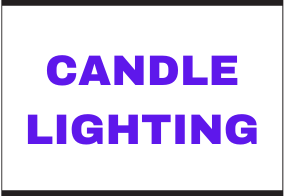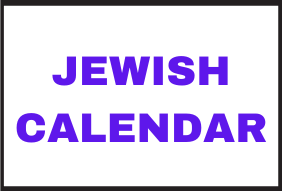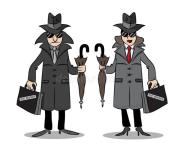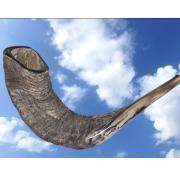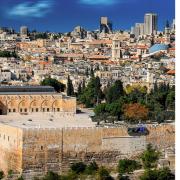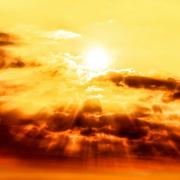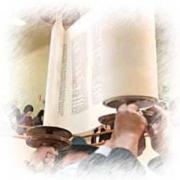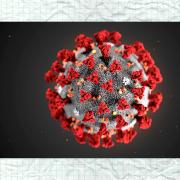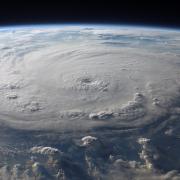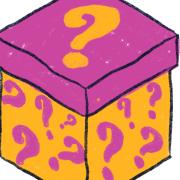The Red Heifer? - 1, Why?
We all have heard of the Red Heifer; the commandment has no explanation, but with your permission, I would like to try to explain it. So, without further ado, let's get started.
There are different types of cows in the world, but the Torah commands us to take the rare cow —the red heifer —for a ceremony.
In Parashat Chukat 19:2-9 it says:
זֹ֚את חֻקַּ֣ת הַתּוֹרָ֔ה אֲשֶׁר־צִוָּ֥ה יְהֹוָ֖ה לֵאמֹ֑ר דַּבֵּ֣ר ׀ אֶל־בְּנֵ֣י יִשְׂרָאֵ֗ל וְיִקְח֣וּ אֵלֶ֩יךָ֩ פָרָ֨ה אֲדֻמָּ֜ה תְּמִימָ֗ה אֲשֶׁ֤ר אֵֽין־בָּהּ֙ מ֔וּם אֲשֶׁ֛ר לֹא־עָלָ֥ה עָלֶ֖יהָ עֹֽל׃
This is the law of the Torah which the Lord has commanded, saying, Speak to the children of Yisrael, that they bring thee a red heifer without defect, in which there is no blemish, and upon which never came a yoke:
וּנְתַתֶּ֣ם אֹתָ֔הּ אֶל־אֶלְעָזָ֖ר הַכֹּהֵ֑ן וְהוֹצִ֤יא אֹתָהּ֙ אֶל־מִח֣וּץ לַֽמַּחֲנֶ֔ה וְשָׁחַ֥ט אֹתָ֖הּ לְפָנָֽיו׃
and you shall give her to Elazar the priest, that he may bring her outside the camp, and she shall be slaughtered before his face:
וְשָׂרַ֥ף אֶת־הַפָּרָ֖ה לְעֵינָ֑יו אֶת־עֹרָ֤הּ וְאֶת־בְּשָׂרָהּ֙ וְאֶת־דָּמָ֔הּ עַל־פִּרְשָׁ֖הּ יִשְׂרֹֽף׃
and the heifer shall be burnt in his sight; her skin, and her flesh, and her blood, with her dung, shall be burnt: וְלָקַ֣ח הַכֹּהֵ֗ן עֵ֥ץ אֶ֛רֶז וְאֵז֖וֹב וּשְׁנִ֣י תוֹלָ֑עַת וְהִשְׁלִ֕יךְ אֶל־תּ֖וֹךְ שְׂרֵפַ֥ת הַפָּרָֽה׃
and the priest shall take cedar wood, and hyssop, and scarlet, and cast it into the midst of the burning of the heifer.
וְאָסַ֣ף ׀ אִ֣ישׁ טָה֗וֹר אֵ֚ת אֵ֣פֶר הַפָּרָ֔ה וְהִנִּ֛יחַ מִח֥וּץ לַֽמַּחֲנֶ֖ה בְּמָק֣וֹם טָה֑וֹר וְ֠הָיְתָ֠ה לַעֲדַ֨ת בְּנֵֽי־יִשְׂרָאֵ֧ל לְמִשְׁמֶ֛רֶת לְמֵ֥י נִדָּ֖ה חַטָּ֥את הִֽוא׃
And a ritually clean man shall gather up the ashes of the heifer, and lay them outside the camp in a clean place. It shall be kept for the congregation of the children of Yisrael for the water of sprinkling: it is a purification offering.
This reminds me of something in Parashat Toldot. It says there in the Toldot 25:30 - "Esau said to Jacob: Feed me now from that red, red [haadom haadom] dish, as I am tired. Therefore, his name is called Edom". - These two events in the Torah are connected via the red heifer and the soup that Eisav bought -- red or rare heifer VS הָאָדֹ֤ם הָאָדֹם֙ הַזֶּ֔ה - this red red dish. Hashem wants us to pay attention to Eisav when he asks for that dish.
What is Hashem trying to tell us?
Hashem is trying to tell us that He is concerned about Eisav, but not the ancient Eisav—the brother of Yaakov Avinu —who has abandoned the path and faith of his father, Yitzchak, and his grandfather, Avraham. The one who ran after the wealth and luxury of this world while ignoring the spiritual side, thus being forever lost to Torah and Judaism, not only himself but billions of his descendants over the centuries till today.
Hashem is concerned about the other Eisav, the one you and I may know—the everyday Eisav'im. The ones we see on the street, and maybe the one that stares back at you in the mirror. Some are lost to the Torah and mitzvot because they either don't know it or, if they do, choose to ignore it. These are the Eisav'im of today - Hashem does not want to lose. He cares about them, and He wants them back.
And how will He get them back? This is where the Red Heifer comes in.
In the Haftorah for the Parashat Parah, after the red heifer is made to ashes, in Ezekiel 36:25-37, it says the following:
וְזָרַקְתִּ֧י עֲלֵיכֶ֛ם מַ֥יִם טְהוֹרִ֖ים וּטְהַרְתֶּ֑ם מִכֹּ֧ל טֻמְאוֹתֵיכֶ֛ם וּמִכׇּל־גִּלּ֥וּלֵיכֶ֖ם אֲטַהֵ֥ר אֶתְכֶֽם׃
I will sprinkle pure water upon you, and you shall be purified: I will purify you from all your defilement and all your fetishes.
וְנָתַתִּ֤י לָכֶם֙ לֵ֣ב חָדָ֔שׁ וְר֥וּחַ חֲדָשָׁ֖ה אֶתֵּ֣ן בְּקִרְבְּכֶ֑ם וַהֲסִ֨רֹתִ֜י אֶת־לֵ֤ב הָאֶ֙בֶן֙ מִבְּשַׂרְכֶ֔ם וְנָתַתִּ֥י לָכֶ֖ם לֵ֥ב בָּשָֽׂר׃
And I will give you a new heart and put a new spirit into you: I will remove the heart of stone from your body and give you a heart of flesh;
וְאֶת־רוּחִ֖י אֶתֵּ֣ן בְּקִרְבְּכֶ֑ם וְעָשִׂ֗יתִי אֵ֤ת אֲשֶׁר־בְּחֻקַּי֙ תֵּלֵ֔כוּ וּמִשְׁפָּטַ֥י תִּשְׁמְר֖וּ וַעֲשִׂיתֶֽם׃
And I will put My spirit into you. Thus I will cause you to follow My laws and faithfully observe My rules.
וּזְכַרְתֶּם֙ אֶת־דַּרְכֵיכֶ֣ם הָרָעִ֔ים וּמַעַלְלֵיכֶ֖ם אֲשֶׁ֣ר לֹֽא־טוֹבִ֑ים וּנְקֹֽטֹתֶם֙ בִּפְנֵיכֶ֔ם עַ֚ל עֲוֺנֹ֣תֵיכֶ֔ם וְעַ֖ל תּוֹעֲבוֹתֵיכֶֽם׃
Then you will remember your evil ways and your doings that were not good, and you shall hate yourselves in your sight because of your sins and your disgusting practices.
לֹ֧א לְמַעַנְכֶ֣ם אֲנִֽי־עֹשֶׂ֗ה נְאֻם֙ אֲדֹנָ֣י יֱהֹוִ֔ה יִוָּדַ֖ע לָכֶ֑ם בּ֧וֹשׁוּ וְהִכָּֽלְמ֛וּ מִדַּרְכֵיכֶ֖ם בֵּ֥ית יִשְׂרָאֵֽל׃
Not for your sake will I act — declares the Sovereign G-d — let it be known to you. Be ashamed and humiliated because of your ways, O House of Israel!
When they sprinkle the waters of the Red Heifer on the people, it will purify them, and it will also change the heart of stone we currently have to the heart of flesh, and this is when we will finally understand and regret the times we went against G-d and His laws.
And this is Hashem's plan to help the Eisav'im of Today - all of us, to come back home - to truly repent and become holy, and to "re-join" the Jewish nation with a heart full of gratitude and dedication to Hashem and His laws.
May it speedily happen in our days, Amen!
Click here for Part 2 to go even deeper and to understand the secrets of the Red Heifer.
Shmuel Katanov


